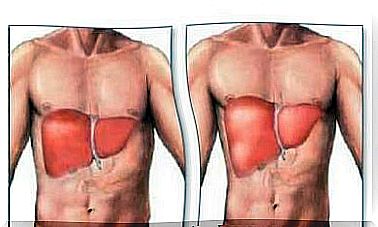Movements For Tendonitis Of The Shoulder

This time we want to look at some exercises that are a good help for shoulder tendonitis. This is one of the most common forms of tendonitis.
What exactly is tendonitis of the shoulder?
In addition to inflammation of the tendon, this lesion exhibits micro-ruptures that prevent movement and rotation in the area where the inflammation is located.
There are several factors that can lead to tendonitis – so here are the main reasons for the development of that ailment.
1. Aging

This inflammation is most common in people over 40 years of age. However, it has become increasingly common in younger adults in the 25-35 age group.
2. Mechanical factors
Your movements may also be the cause of tendonitis. In this case, raising the hand during certain physical or work-related intense activities (which causes an increase in the force of abrasion) as well as excessive use of a strained tendon can cause a micro-injury that causes inflammation.
3. Vascular factors
In this case, the infra and supraspinatus muscles suffer. Both muscles have areas of low hydration in the tendon and are thus more susceptible to degenerative processes .
What are the symptoms of tendonitis of the shoulder?
The symptoms of this inflammation include, above all, the pain that is the greatest and most common. The pain manifests itself as follows:
- at night and during rest
- during pressure
- when you do certain movements (especially when you raise your arm)
- when you stretch in a cold place
It is also important to know that when there is tendonitis in the shoulder, there may be pain even at night (for example, when the arm is asleep) and it may be present throughout the day (and may increase during sleep at night).
When tendonitis occurs in the muscles of the rotator cuff, the symptoms are more limited, and these include the following:
- pain in the side or back of the shoulder
- shoulder arch differentiation up to 120 degrees
- immobility when trying to rotate or raise your arm
Exercises for tendonitis of the shoulder

When a routine is created for a patient with tendonitis of the shoulder, the goal is to reduce pain and increase mobility so that the patient can do his or her daily routine without pain.
In addition, these exercises work to strengthen the muscles around the shoulder as well as stretch them well, and allow you to return to activity.
However, it is important to contact, for example, a sports coach, traumatologist or physiotherapist before starting. With her help, you can make sure that you really get the exercises that are right for you and that you are doing them right.
A regular exercise routine to improve shoulder condition will help you increase your flexibility, improve posture control, and increase muscle strength. This change is happening little by little.
- Start by doing gentle exercises that warm your body and are slow and controlled.
- During the next step, it is then possible to use weights.
So now we describe the exercises that can be a good help in relieving shoulder pain in case of tendonitis.
1. Preliminary stretches
- Stand straight in front of a chair or table, lean against the edge of your healthy arm, and then tilt the chair or table forward.
- Your back should now be parallel to the floor, and your legs should be straight.
- Leave its arm, which is on the side of the injured shoulder, hanging (quite relaxed), and make small circles just as if you were imitating an old wall clock.
- After 20 repetitions of this movement, make small movements in the other direction. As you progress, enlarge the circles.
2. Stretches to the front
- Stand with your back straight, use the arm on the side of the injured shoulder and bring it up to the other shoulder. (For example, if your right shoulder is inflamed, your right arm should go over your chest so that your hand touches your left shoulder.)
- Take the injured shoulder with the healthy side in your hand, and push the shoulder upward to create a stretching effect. Raise your arm as much as you can without this resulting in no pain.
- Hold the stretch for a few seconds, lower, and then do the exercise again.
3. Stretching with support

For this exercise, you can use a wall, or the edge of a window or door.
- Stand up straight and support the injured shoulder arm with your healthy side in hand.
- Once you have put yourself in a good position, lean your body forward to achieve a good arm stretch. (Your arm should be behind your back.)
- Hold this position for ten seconds, and then rest and repeat.
4. Stretching with support and lifting
You can also use a wall or window for this exercise.
- Raise your arm in the arch and come your hand over your shoulder.
- Using your fingertips, then apply pressure so that your palm comes off the surface.
- Then move your fingers up so you can raise your shoulders.
5. Stretching with rubber band
If you do not have an elastic band available (available from sporting goods stores or rehabilitation centers), you can use a towel or a suitable cloth as a tool.
- Put the top of your hand on the side of the injured shoulder behind your back, and put your other arm above your head.
- Hold the tape with both hands.
- The hand that is on top of your head should be pulled up slightly toward the ceiling, which will then raise the other arm upward.
6. Reinforcement with tape

In order to do this exercise correctly, the strap should be tied to a door or the like. Alternatively, you can also use a strip as a tool.
- Lie on your side and take the tape on the side of the injured shoulder.
- Make movements to the sides so that you stretch as much as you can.
- The movement should be done by the biceps, as the stretcher is “caught” in the upper body.
Try these basic movements if you suffer from tendonitis of the shoulder, but first remember to make sure from an expert that they are also suitable for your own situation!









